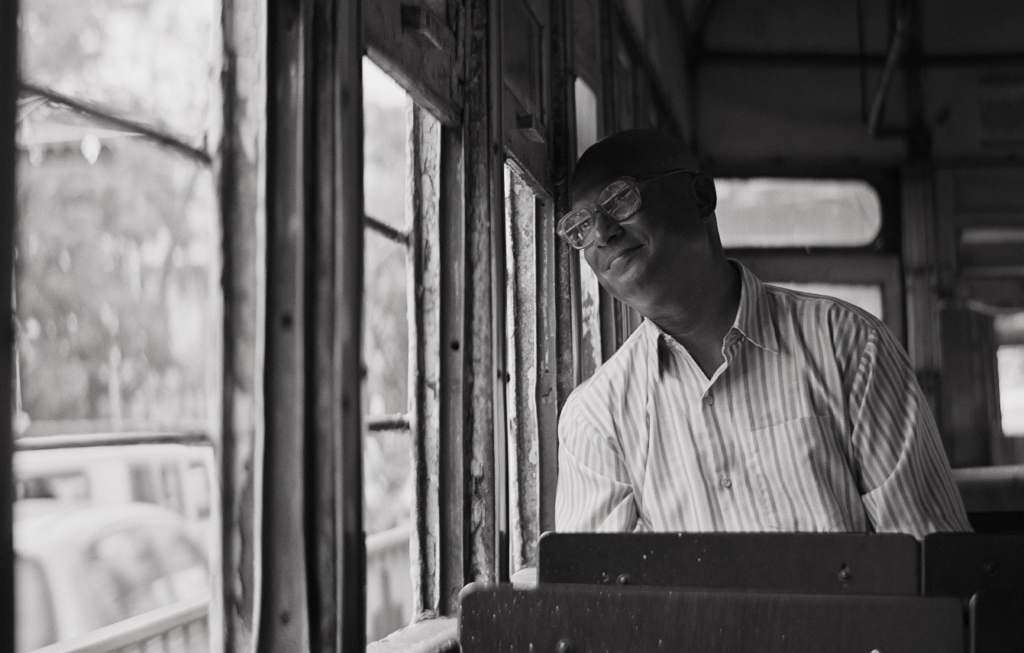Bengal was once known for its vibrant urban cinema which drew inspiration from the conflicts and contradictions embodied in the city of Kolkata. In the recent past filmmakers, both from the mainstream and the independent streams, seemed to have lost this fundamental connection with the city. Made in 2021 and finally released on July 12, 2024 following a successful festival run, Manikbabur Megh, directed by Abhinandan Banerje, effectively renews this vital artistic nexus between cinema and the city by placing Kolkata in the centre of the narrative. But Abhinandan’s film has little affinity with the urban films of the 1960s and ’70s, which emerged from the socio-political turmoil and expediencies of post-colonial experience. And unlike the standard festival-circuit films, Manikbabur Megh avoids grand gestures and the aesthetic flourishes associated with contemporary art cinema. Stylistically impeccable yet restrained, this film offers a dreamy tale of solitude and love set against the unfeeling backdrop of the sprawling metropolis.
The protagonist is a Bengali ‘everyman’ – middle-aged, quiet, sensitive, non-confrontational – a sort one encounters during a tram ride in central Kolkata. Manik (Chandan Sen) has embraced tedium with the same sincerity with which he tends to his geriatric, bedridden father. He is a creature of habit and a slave of routine. A meek bachelor, whom nobody notices or takes seriously, he is a cog in the bureaucratic wheel in a nameless government office. Manik silently clears files through the day, quietly eats his simple lunch and minds his own business. Manik remains the epitome of the ordinary – an invisible nobody – till something shocking jolts him out of his dreary life. Suddenly one day he notices a cloud hovering in the sky above him, following him around the city, as if fascinated by his presence. Love assumes many forms and eventually, Manik is convinced that this enigmatic piece of condensed vapour hanging over the city is the love of his life. His closest friend sees this as part of his gradual descent into madness. As the film progresses, Manik eats, sleeps, and walks with the cloud. Gradually, the realist veneer of the narrative peels off to reveal a magical, allegoric dimension.
The romantic entanglement with the mysterious cloud transforms Manik’s unremarkable life. After all, he is a man in love. Manik goes through the day literally with his head in the cloud. In Kalidasa’s Meghadūta, the cloud is the messenger of love. Here, the cloud itself, is the object of love. Manik, through a touch of irony, becomes the lamenting Yaksha of the verse, a human equivalent who has forgotten his beloved Yakshi and, instead, has fallen for the megh (cloud).
The film’s stylistic choices emerge organically from its thematic and formal concerns and the techno-aesthetic context of the early 20th century. As opposed to the urban cinema of the 20th century, Manikbabur Megh is a film built around the affordances of the digital medium. Long-duration shots or ‘long-takes’ allow a filmmaker to capture cinematic time and space, the inherent rhythms of actions unimpeded by editing. While long shots have been seen in 20th-century cinema as well, digital technologies in film have made it easier to conceive and execute them. The filmmaker is free from the anxiety of wasting expensive film negatives in the event of even minor mistakes while executing a long-duration shot. Along with long takes, easier control of image tones, deeper silences devoid of system sounds and hums, spatial or surround sounds are part of the digital arsenal available to 21st-century filmmakers. Thus digital tools end up shaping newer expressions of realism and cinematic narration, as evident in the film. The long-duration shots in the film slow down the action and thus call attention to the key visual and aural details. Freed from the pressure of narrative, the viewer starts noticing sounds and silences, light and tonalities.
Minimal reliance on dialogue by Abhinandan and his cowriter Bauddhayan Mukherji (also one of the producers of the film) opens up possibilities around the creative manipulation of sound. As a nod to cinema’s sensory power, the strategic layering of digetic sounds evokes a haptic reality. Kolkata lives and breathes through its sonic traces – the sounds of ghats, wet markets, dingy offices, temples, street vendors, and trams, make up for the relative absence of the spoken word. Crucial sounds and diegetic music are, most often, off-screen and acousmatic. We can only hear the drifting, disembodied voice of the uncouth landlady, shouting and cursing at Manik. We never get to see her. Her obnoxious and domineering presence is underlined sonically. Background or non-diegetic music is used sparingly, only to accentuate emotional high points and to break the monotony of urban existence. However, the overemphasis on the music to underline Manik’s enchantment was an avoidable tool as it ruptures the restrained aesthetics and quietude that represent the film.
For an audience used to louder, faster-paced films with tight dramatic structures, Manikbabur Megh offers a different form of viewing pleasure. And it could also be a useful tool to train the senses to appreciate and engage with a slower and more nuanced cinematic aesthetic. A viewer from Kolkata could start noticing things about the metropolis they have not noticed before. After all, cinema does not only show reality but illuminates it.
Bengali, Drama, Black & White



Sounds interesting, is it on the net?
You have nailed it again with your words. A fine nuanced review. Will definitely watch.